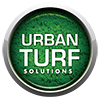Protecting Your Turf from Pests and Weeds: A Barrier Against Unwanted Guests
One of the advantages of artificial grass is its resistance to pests and weeds. However, that doesn’t mean it’s entirely immune. Here are some strategies to keep your artificial lawn free from unwanted pests and weeds.
Why Pests and Weeds Can Be a Problem
Even though artificial grass itself doesn’t attract pests or allow weed growth, the surrounding areas might. Weeds can sprout around the edges or through seams, and pests can be attracted to food spills or organic debris.
Physical Barriers
Installing a physical barrier like a weed membrane beneath your artificial grass can prevent weeds from sprouting through the turf. Similarly, edging stones around the perimeter can discourage weeds.
Chemical Treatments
While it’s rarely necessary, you can use a gentle herbicide or pesticide that is safe for synthetic materials if you have a persistent problem.
Regular Cleaning
Routine cleaning can go a long way in preventing pests and weeds. Food spills should be cleaned immediately to avoid attracting pests, and organic debris like leaves and twigs should be removed regularly.
Natural Repellents
For those who prefer not to use chemicals, natural repellents like citrus peels or vinegar can sometimes deter pests. However, these should be tested on a small patch first to ensure they don’t cause damage or discolouration.
Monitoring and Early Intervention
Keep an eye out for early signs of pest activity or weed growth. Early intervention is much easier and less invasive than dealing with a full-blown infestation.
Tips for Pet Owners
Pet waste can attract pests. If you have pets, make sure to clean up after them promptly and consider using an enzyme cleaner to break down organic matter and odours.
